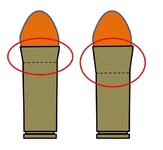- Messages
- 296
- Reactions
- 46
Hey guys,
I'm getting ready to do my first reloads (9mm & .40)...I've prepped all my brass...but I'm a little afraid doing it for the first time. I've read my books but am still unsure do I need to crimp the shell casings once I've made the round?
I will be shooting them in semi-auto's....please advise.
Thanks,
I'm getting ready to do my first reloads (9mm & .40)...I've prepped all my brass...but I'm a little afraid doing it for the first time. I've read my books but am still unsure do I need to crimp the shell casings once I've made the round?
I will be shooting them in semi-auto's....please advise.
Thanks,












